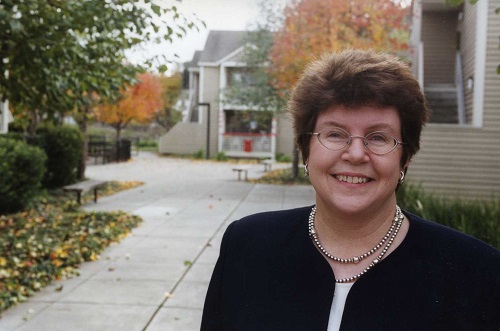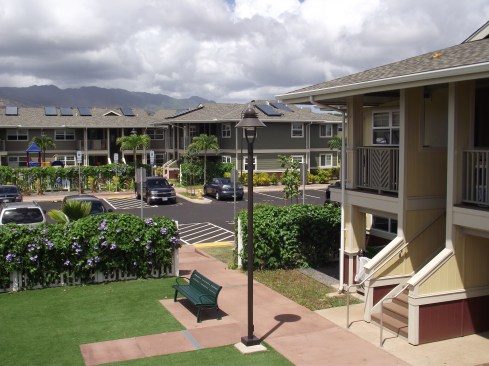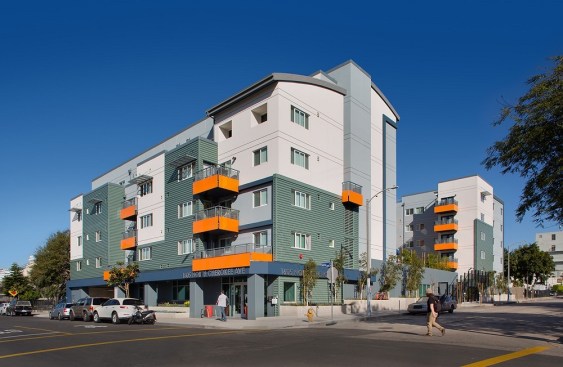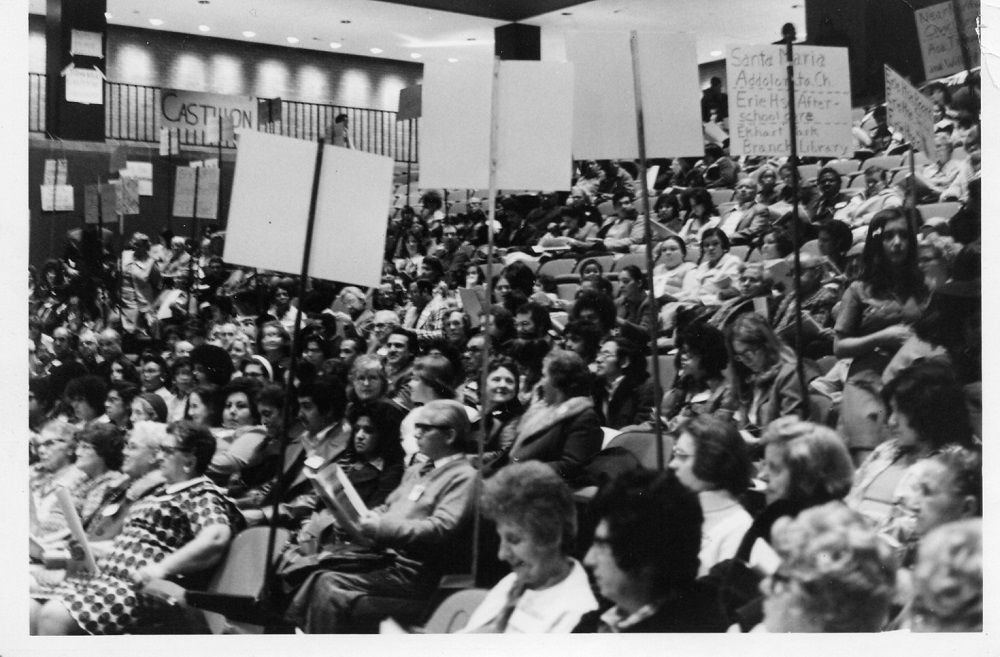This story was originally published in Affordable Housing Finance.
The Vietnam War raged. Martin Luther King Jr. and Robert Kennedy were shot down. U.S. Olympians Tommie Smith and John Carlos raised their gloved fists in the air. Protesters and police clashed at the Democratic National Convention in Chicago. The Fair Housing Act was passed by Congress, and Richard Nixon was elected president.
This revolutionary time also gave rise to community development and social justice organizations focused on revitalizing neighborhoods and alleviating poverty. Several leading affordable housing organizations can trace their roots back to 1968, including Abode Communities, Bickerdike Redevelopment Corp., EAH Housing, and Eden Housing. They’re still in the good fight as they turn 50 this year.
“Collectively, we were the first wave after the Housing Act,” says Mary Murtagh, president and CEO of EAH Housing in Northern California. “It touched off this movement of nonprofits.”
Eden Housing
The six community activists who founded Eden Housing didn’t have an office, so they held breakfast meetings at the International House of Pancakes, still located on Foothill Boulevard in Hayward, Calif.
They originally came together to work on a ballot initiative for fair housing. The initiative failed, but the group didn’t stop. Each board member “adopted” a family and took on the challenge of rehabilitating six single-family homes. After they accomplished that mission, they tackled an even more ambitious project, building the 150-unit Josephine Lum Lodge in Hayward in 1972.
An early supporter, Lum left her home to Eden Housing when she died. The group then sold the property, giving the nonprofit its first “bankroll” and the founders the start they needed to build their first multifamily development.

Jeff Peters
Developed by Eden Housing in 1972, Josephine Lum Lodge continues to provide affordable housing in Hayward, Calif.
“One of them hired the architect. One of them hired the contractor. One of them did the paperwork,” says Linda Mandolini, president of Eden Housing for the past 17 years.
The original board included Bill Vandenburgh, one of the first basketball coaches to lead an integrated team at then California State University at Hayward. “He saw the challenges some of his players were facing with getting the basics like a place to live and enough food to eat,” Mandolini says. “He wanted to do something about it.”

Courtesy Eden Housing
Linda Mandolini
The board was very much a product of its time, according to Mandolini. Rick Holliday, who went on to launch BRIDGE Housing and Holliday Development, was Eden’s first executive director. He was followed by Carol Galante who led the organization from 1982 to 1987, before leading BRIDGE and serving as commissioner of the Federal Housing Administration during the Obama administration. Catherine Merschel then led the organization for about 14 years before Mandolini took the reins.
Eden developed one of the first low-income housing tax credit (LIHTC) projects in the state, Cypress Glen in Hayward, soon after the federal program was established in 1986.
The organization has gone on to build or acquire 10,776 units in 156 apartment communities, with a robust pipeline of another 905 units under development. In 2017, Eden opened Valor Crossing, a 66-unit development that serves the housing needs of veterans and their families in Dublin, Calif., and Cranes Landing, 80 units for seniors in Lodi, Calif.

Jeff Peters
Eden Housing's Cranes Landing delivers 80 units for seniors in Lodi, Calif.
Early support from the city of Hayward was pivotal, providing operating money in the organization’s formative years. The hiring of staff, starting with Holliday and Galante, was another turning point. And, the creation of the LIHTC was another major event that helped propel Eden forward, says Mandolini.
Always searching for ways to provide housing, Eden started looking early on at how to leverage its portfolio to have a more stable operating base. One example is when Eden made the move to reposition its Department of Housing and Urban Development (HUD)–financed properties with LIHTCs, which brought in more operating revenue in a more steady stream. This helped the organization weather the recession and other challenges when other nonprofits struggled.
While Eden has grown to be one of the most active and prominent affordable housing developers in the nation, it’s early spirit continues on. A “we-want-to-change-the-world-for-the-better attitude” still runs through the organization, according to Mandolini.
“Homes create a launching pad for children to go to college and families to get ahead, and a landing place for seniors to age in place with dignity and respect,” she says. “If we don’t try to find ways for people to have a decent place to live here in California, we’re not going to be the kind of society that we all value at Eden. We can do better.”
Bickerdike Redevelopment Corp.
In 1967, neighborhoods in Chicago’s near northwest side were plagued by widespread demolition and arson. It was a time when “red lining” was a regular occurrence so few loans were being made in this section of the city.
This meant owners in West Town, a neighborhood that had about 80 percent multifamily rental and 20 percent homeownership properties, couldn’t sell their buildings. As a consequence, buildings were burning down or falling into disrepair.
There were organizations working on ending slum housing and other negative activities that were bringing the community down, but there wasn’t a group focused on development, says Joy Aruguete, CEO of Bickerdike Redevelopment Corp.

Mike Jue Photography/Courtesy Bickerdike Redevelopment Corp.
Joy Aruguete
“At the time, nobody wanted to be a builder because they were a church or a civic institution or a social service institution,” she says. “These groups came together to create a new corporation that could build.”
That was the start to Bickerdike, which initially concentrated its work in West Town, Humboldt Park, and Logan Square. Over the years, it has expanded into the Hermosa and Avondale neighborhoods.
“Our mission has largely remained the same,” says Aruguete, who has led Bickerdike for 23 years.
The nonprofit has developed 154 for-sale properties as well as 1,174 rental apartments that house nearly 3,500 residents. It also manages more than 1,000 rental units in 145 buildings.
The organization is named after George Bickerdike, a native of Yorkshire, England, who emigrated to the United States in 1833. A carpenter by trade, he worked in Cincinnati and Fort Wayne, Ind., before riding on horseback to Chicago, where he purchased land and built his own carpentry shop. He watched the value of that land increase before selling it to buy 80 acres in what is known today as Oak Park. Bickerdike built a lumber mill on the banks of the Des Plaines River and again sold the land for a good price to buy 84 acres in today’s West Town. He subdivided that land with the idea of building homes. It is on that parcel where many of Bickerdike’s first properties arose in the late 1960s and 1970s, according to the organization.
The group founders saw themselves as re-developers of George Bickerdike’s land to put it in the hands of the area’s working families.
Many organizations have “community development” in their titles, but Bickerdike stands out with “redevelopment” in its name, which fits with the organization’s focus on rebuilding neighborhoods.
In 2017, the group developed the 72-unit Nelson Mandela Apartments, replacing long-vacant parcels along one of Chicago’s historic boulevards in the Humboldt Park neighborhood.
Bickerdike is also working with Heartland Housing and Related Midwest on the construction of the first phase of the Lathrop project, which consists of 414 units in one new and 16 historic buildings. Plans call for the 34-acre site along the Chicago River to eventually have over 1,100 apartments and 25,000 square feet of commercial or community space.
Aruguete likes to say that success rarely happens by accident.
“You have to plan to be around,” she says. “Make sure every single problem that rears its head in the predevelopment phase is resolved. Never ever do a deal just to get it done. You do it because it’s the right thing to do, and don’t make sacrifices that would put the development in peril moving forward.”
EAH Housing
Sparked by the assassination of Martin Luther King Jr., EAH Housing rose from the civil unrest in 1968.
A coalition of 24 organizations, each pledging $200, established the nonprofit, originally known as Ecumenical Association for Housing, with the purpose of addressing the needs of low-income families and seniors in Northern California’s Marin County.
“There were many groups meeting and trying to figure out what to do,” Murtagh says. “One group joined forces around the idea of building affordable housing. They figured that was pretty audacious. This was a powerful idea.”

Courtesy EAH Housing
Mary Murtagh
The grassroots effort began in a donated office staffed by two volunteers.
The organization’s first project was Pilgrim Park, a 61-unit community built on church land in San Rafael in 1971. EAH Housing has since grown beyond Marin County to provide housing in 55 municipalities in California and Hawaii. It serves more than 20,000 residents daily.
Over the years, it has created approximately 100 developments and is currently building its 8,000th unit at Estrella Vista, a transit-oriented, mixed-use affordable housing development under construction in Emeryville. The apartments will be reserved for families earning 20 percent to 60 percent of the area median income.
Since its early years, EAH has had a paid advocacy position on its staff. “If someone is running for office in one of the communities we have a property, we make sure they are educated about affordable housing,” says Murtagh, noting that one of the organization’s founding groups was the League of Women Voters.
Murtagh became interested in affordable housing while receiving a master’s degree in architecture from the Massachusetts Institute of Technology. One of her professors took her to a housing project in Boston and told her to work there for a term.
“It was cold and windy,” she recalls. “And, there wasn’t a blade of grass.”
The grim conditions at the project influenced Murtagh to go back to MIT and learn more about housing policy. She eventually moved to the West Coast, landed a job at a redevelopment agency, and began studying real estate finance at night at the University of California at Los Angeles. Before MIT, Murtagh earned a bachelor’s degree from Wellesley College, where Hillary Clinton was a student. “Although I didn’t have any classes with Hillary, I have been continually impressed by the strong leadership and commitment to service by Hillary and other Wellesley alumnae. I am honored to be a part of such a distinguished group of women.”
EAH began branching into other counties and regions soon after Murtagh joined the team in 1986. Under her leadership, EAH has grown significantly, first expanding in California and then Hawaii, where it was first asked by HUD officials to step in and help preserve a housing development in Honolulu that was at risk of losing its affordability.

Courtesy EAH Housing
EAH Housing's Villages of Moa‘e Ku provides 192 homes on Oahu, Hawaii's most-visited island.
EAH, which has had its own internal property management division since 1978, has also grown on the service front. Its comprehensive resident services department offers education, wellness, and social programs for children and adults. It also instituted a popular scholarship initiative for residents and created one of the first computer learning centers in affordable housing.
Along with affordable housing, these are ways to lift children out of poverty. “We’ve stuck to the mission,” Murtagh says. “Social justice—that’s why we’re here.”
Abode Communities
Abode Communities rose out of the community design center movement of the 1960s.
Originally known as the Los Angeles Community Design Center (LACDC), the nonprofit was created at a time when architects were being challenged to engage in the civil rights movement and advocate for those who were being left out of the design process and help address issues in the nation’s neighborhoods.

Courtesy Abode Communities
Robin Hughes
In the early 1980s, the organization recognized a need to address the burgeoning affordable housing crisis in Los Angeles and began to offer professional real estate development services for the production and preservation of affordable housing. In the late 1990s, Abode Communities made another move and expanded its services to include property management. Together, the organization’s professional services—real estate, architecture, and property management—have helped ensure the organization’s high-quality standard is brought to every affordable residential community placed in service.
“Our evolution over the past 50 years has focused on meeting people where they are, bringing high-quality service-enhanced affordable housing and community-serving buildings to elevate individuals and communities, says Robin Hughes, president and CEO of Abode Communities.
Like Eden Housing in Northern California, Abode Communities was an early user of the LIHTC program and helped to build the nonprofit affordable housing sector in greater Los Angeles. All of the organization’s early development projects were in partnership with service organizations that needed technical assistance transitioning into affordable housing or neighborhood- and faith-based organizations that wanted to address affordable housing in their communities. Its history also includes serving as an early consultant and launching pad for a number of nonprofits that have gone on to write their own rich histories, including Little Tokyo Service Center, Hollywood Community Housing Corp., Skid Row Housing Trust, and West Hollywood Community Housing Corp.
Today, that work continues as Abode Communities prioritizes partnerships to deepen its impact. For example, the organization has completed two joint-use residential communities with Los Angeles Unified School District on the district’s surplus land, one of which is dedicated to offering affordable housing for “non-exempt” employees.

Courtesy Abode Communities
Developed by Abode Communities in collaboration with the Los Angeles Unified School District, Selma Community Housing provides 66 service-enhanced affordable homes to families in Hollywood, Calif.
Abode Communities is unique in that its multidisciplinary approach also includes a substantial resident services program, Beyond Homes. As a social service provider, the organization touches nearly 5,000 low-income people living throughout Los Angeles County.
“Beyond Homes is an integral tool to helping families and individuals remain stable in their housing as they work to find self-sufficiency,” Hughes says. “I get so excited to meet residents, hear their stories, and witness the change in our communities.”
With architecture and planning at its roots, Abode Communities has long been committed to environmental sustainability with six of its housing developments having earned LEED Platinum certification and one LEED Gold.

Courtesy Abode Communities
Abode Communities is working on its second mixed-use affordable housing development in partnership with the Los Angeles County Metropolitan Transit Authority. The Chavez Fickett development will feature 60 affordable family homes, a 25,000-square-foot grocery store, and a 6,500-square-foot park in the Boyle Heights neighborhood of Los Angeles.
Looking ahead, Abode Communities is working on several significant projects, including the redevelopment of a transit-adjacent site in South Los Angeles, which will soon feature 140 service-enhanced affordable homes, a 6,500-square-foot community health clinic, and 1,500 square feet of community-serving retail. In partnership with the Los Angeles County Metropolitan Transit Authority, the organization also will bring more than 136 affordable homes and a 25,000-square-foot grocery store to the Boyle Heights community in East Los Angeles by 2022. Abode Communities’ impact further expands beyond Los Angeles County, as the organization begins work on 153 family farmworker homes in the Coachella Valley and expanding its architectural services into San Diego.
“The disparity between income and housing affordability continues to plague our communities. It is my vision for Abode Communities to continually evolve for another 50 years to bring equal housing for all,” says Hughes.
To read more stories like this, visit Affordable Housing Finance.
